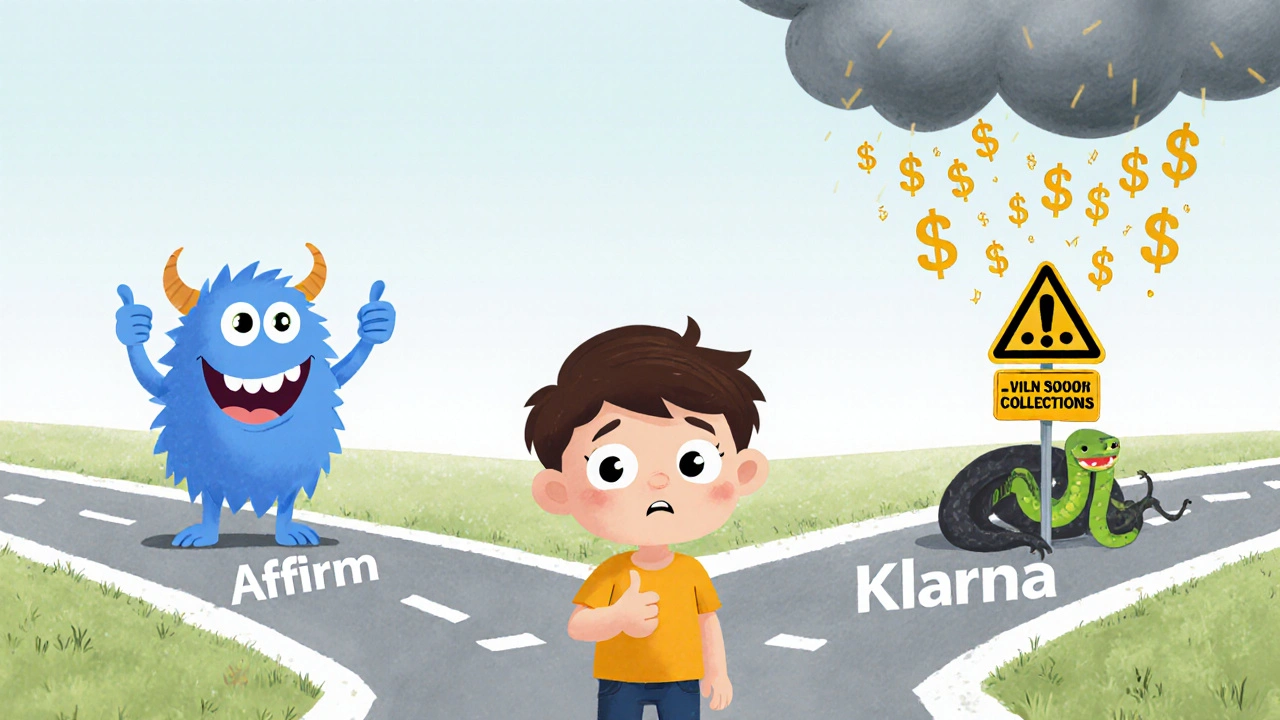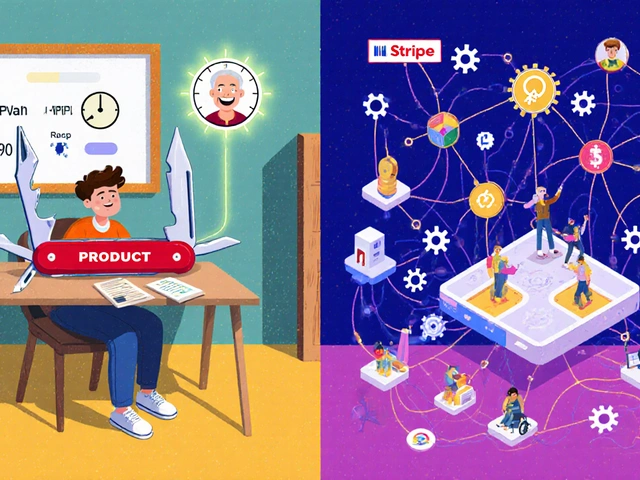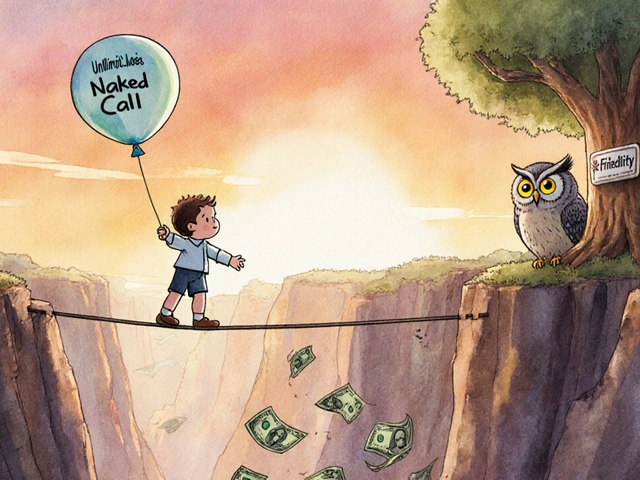BNPL Credit Score Impact Calculator
Enter your information to see how BNPL payments affect your score
For years, Buy Now, Pay Later (BNPL) felt like a free pass for your credit score. You split your $150 shoe purchase into four $37.50 payments with Klarna or Afterpay, made every payment on time, and saw zero change on your Experian or TransUnion report. It felt like magic-no credit check, no interest, no impact. But that’s changing fast. Starting in fall 2025, your BNPL behavior will directly affect your credit score. If you’ve ever used Afterpay, Affirm, or PayPal’s Pay in 4, you need to understand how this shift will hit you-and whether it’s a threat or an opportunity.
BNPL Used to Be Invisible. Now It’s Not.
Before 2024, most BNPL services didn’t report to credit bureaus. That meant your perfect payment history with Klarna didn’t help your score. But it also meant a missed payment didn’t hurt it-unless it went to collections. And that’s where things got dangerous. If you skipped a payment and the provider handed your debt to a collector, that collection account could drop your score by 50 to 100 points. One user on Reddit lost 47 points after a $78 Klarna balance turned into a collections line. That’s not a glitch-it’s the old system’s hidden trap.
Now, FICO is rolling out new scoring models-FICO Score 10 BNPL and FICO Score 10 T BNPL-that will include BNPL data. These models start rolling out in fall 2025. Experian, Equifax, and TransUnion are all preparing to collect BNPL payment data from providers starting in early 2025. This isn’t a rumor. It’s a system-wide overhaul, backed by FICO’s 12-month study of 500,000 users. The goal? To give lenders a clearer picture of how people manage debt, even if it’s not traditional credit.
Which BNPL Services Report Now?
Not all BNPL is the same. Some always reported. Others never did. And some switched midstream. Here’s what’s happening right now:
- Afterpay and Klarna (standard 4-pay plans): Still don’t report on-time payments. But if you miss a payment and it goes to collections? That shows up. No warning. No grace period. Just a ding on your report.
- Affirm: Reports to all three bureaus. They do a hard credit check when you apply for longer-term loans (3-36 months). On-time payments help your score. Missed payments hurt it. This is the closest thing to a traditional loan in the BNPL world.
- PayPal Pay in 4: Doesn’t report on-time payments. But PayPal’s longer-term ‘Pay Monthly’ option does report and requires a hard pull.
- Zip (formerly Quadpay): Began reporting to Experian in late 2022. So if you’ve been using Zip for over two years, your payment history might already be in your file.
Here’s the catch: even if your provider doesn’t report now, they can start at any time. The industry is moving fast. What’s safe today might be tracked tomorrow. And if you’re juggling five different BNPL accounts, you’re playing Russian roulette with your credit score.

How Will BNPL Affect Your Score in 2025?
FICO’s new model weighs BNPL data in three ways:
- Number of BNPL accounts opened in the last 12 months (5% of score): Opening three BNPL accounts in six months looks like financial stress-even if you pay them all on time. Lenders see that as a red flag.
- Payment history on BNPL accounts (10% of score): This is the big one. Missed payments will count just like missed credit card payments. On-time payments? They’ll finally start helping.
- Total BNPL balance relative to income (3% of score): If you owe $2,000 in BNPL debt but make $35,000 a year, that ratio could lower your score. It’s not about the dollar amount-it’s about how much of your income is tied up in short-term debt.
For most people, the change won’t be dramatic. FICO’s study found that 85% of users will see a score change of ±10 points. But for those with multiple late payments or high BNPL balances? A 20- to 40-point drop is possible. The Consumer Financial Protection Bureau estimates 12-15 million people could lose 20+ points when the system fully rolls out.
But here’s the flip side: responsible users could gain 15-25 points. If you’ve been using BNPL like a credit card-on time, no defaults-you’re about to get credit for it. That’s huge for the 26 million Americans who are “credit invisible” because they don’t have credit cards or loans. BNPL could finally help them build a history.
Who’s Most at Risk?
It’s not just the people who miss payments. It’s the people who don’t know they’re playing with fire.
The Consumer Federation of America found that 68% of BNPL users didn’t realize their activity could affect their credit score. Many think it’s just “buy now, pay later”-like a digital gift card. But it’s not. It’s debt. And debt, even if interest-free, still counts.
Users with lower credit scores (median 620) and higher revolving debt ($5,800 average) are already using BNPL more often. The Federal Reserve found BNPL users are 2.3 times more likely to have filed for bankruptcy in the past. That’s not because BNPL caused it-it’s because people who are already financially stretched use BNPL to stretch further. When the scoring system changes, those users will get hit hardest.
And it’s not just about credit. Missed BNPL payments can lead to late fees, account closures, and even legal action. Yelp reviews for Klarna and Afterpay are averaging under 2 stars in 2024, mostly because of aggressive collection tactics and unclear fee structures. One user paid a $45 late fee, then got hit with a $120 collections fee a month later. That’s not just a credit hit-it’s a financial trap.

What Should You Do Now?
You can’t stop using BNPL if it’s your only option. But you can protect yourself.
- Know which providers report. Check your terms. If Affirm or Zip is on your list, treat it like a credit card.
- Limit active accounts. Financial advisors at NerdWallet recommend keeping BNPL usage to 1-2 accounts max. More than that signals risk-even if you’re paying on time.
- Never miss a payment. Even if it’s not reported yet, it could be tomorrow. And if it goes to collections, your score will crash.
- Check your credit reports. Go to AnnualCreditReport.com. Look for any BNPL accounts listed as “Buy-Now-Pay-Later.” If you see one you didn’t know about, dispute it.
- Avoid using BNPL for essentials. Groceries, utilities, rent-if you can’t pay for these with cash, BNPL isn’t a solution. It’s a bandage on a broken bone.
If you’ve been using BNPL responsibly, you’re in a good position. You’re about to get credit for good behavior. If you’ve been careless, the clock is ticking. Start paying down balances now. Close unused accounts. And stop treating BNPL like free money.
The Bigger Picture
BNPL isn’t going away. It’s growing. Global spending hit $120 billion in 2023. Nearly half of Americans under 30 have used it. Regulators are watching. The CFPB is considering new rules to force clearer disclosures and cap late fees. The FTC already cracked down on a provider for falsely claiming “no credit check.”
This isn’t about punishing consumers. It’s about making credit scoring fairer. Right now, people who use credit cards responsibly get rewarded. People who use BNPL responsibly get ignored. That’s changing. The system is finally catching up to how people actually spend.
For some, this will be a wake-up call. For others, it’s a chance to build credit without a credit card. The key is awareness. You can’t control whether BNPL reports. But you can control how you use it. Treat it like debt. Pay it like debt. And your score will thank you.
Does BNPL hurt your credit score if you pay on time?
Currently, most BNPL services like Afterpay and Klarna don’t report on-time payments, so they don’t help your score. But starting in fall 2025, FICO’s new scoring models will include on-time BNPL payments as a positive factor. If you pay on time, your score could improve-especially if you’ve been credit invisible. But if you miss payments, your score will drop.
Do I need a credit check to use BNPL?
Most 4-pay BNPL services like Afterpay and Klarna don’t require a credit check. But Affirm and PayPal’s Pay Monthly options do. They perform a hard inquiry, which can temporarily lower your score by 5-10 points. Always check the provider’s terms before signing up.
Can BNPL show up on my credit report even if I pay everything on time?
Yes-but only if the provider reports. Affirm and Zip already do. Afterpay and Klarna typically don’t, unless you default and the debt goes to collections. Starting in 2025, more providers will report payment history, so even on-time payments could appear on your report. That’s good if you’re consistent. It’s bad if you’re not.
How many BNPL accounts should I have?
Financial experts recommend keeping active BNPL accounts to 1 or 2. Opening multiple accounts in a short time can signal financial strain to lenders. Even if you pay on time, having three or more open BNPL balances could lower your score under the new FICO models starting in 2025.
Will BNPL help me build credit if I’ve never had a credit card?
Yes, potentially. Starting in 2025, responsible BNPL use will be reported to credit bureaus and factored into your score. For the 26 million Americans who are “credit invisible,” this could be the first way to build a credit history without a credit card or loan. But only if you pay on time-every time.
What happens if I miss a BNPL payment?
If you miss a payment, you’ll likely get a late fee (often $7-$10). If you don’t pay within 30-60 days, the provider may send your account to collections. Once that happens, it shows up on your credit report and can drop your score by 50-100 points. Even if the provider doesn’t report now, collections always do.




It's fascinating how we've normalized debt under the guise of convenience. BNPL wasn't designed to help us-it was engineered to capture us, slowly, quietly, while we told ourselves we were being smart. The fact that it didn't report before wasn't a loophole; it was a trapdoor disguised as a gift. Now that FICO is finally bringing it into the light, it’s less about punishment and more about accountability. For those of us who’ve used it responsibly, this is validation. For others? A reckoning. The real tragedy isn’t the score drop-it’s the millions who still think this is ‘free money.’ Debt is debt, whether it comes with interest or not. And if you can’t see that, no algorithm will save you.
So FICO’s rolling out BNPL scoring models-big whoop. Meanwhile, my credit utilization’s still sitting at 87% because I’m juggling three cards and a personal loan, but suddenly my $40 Klarna shoe payment is gonna tank my score? LMAO. The system’s still rigged. If you’re a subprime user, you get hit with hard pulls just to get a $50 line. If you’re prime, you get 0% APR for 18 months on a Tesla. BNPL’s just the latest scapegoat for a credit architecture that’s been broken since 2008. They’re not fixing the system-they’re just adding more variables to punish the people who can’t afford to play the game right.
This whole thing is peak performative financial literacy. Like, wow, you finally noticed that people are using BNPL? Newsflash: it’s been happening since 2019. And now you’re gonna credit-score it? Congrats, you turned a $10 late fee into a 40-point credit apocalypse. Meanwhile, the real issue is that wages haven’t moved since 2007 but Target’s prices are in orbit. You wanna help people? Fix inflation. Don’t punish them for using the only tool left that doesn’t require a 780 score and a signed notarized affidavit from their landlord.